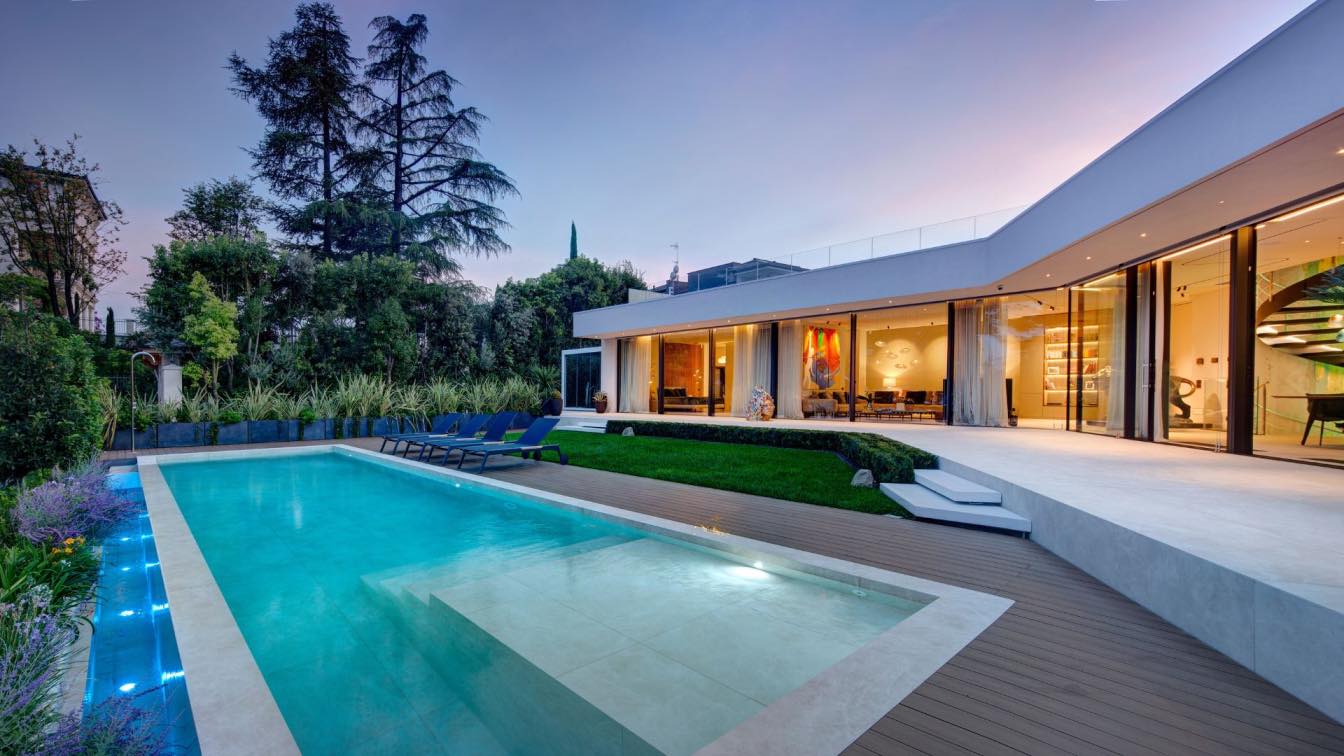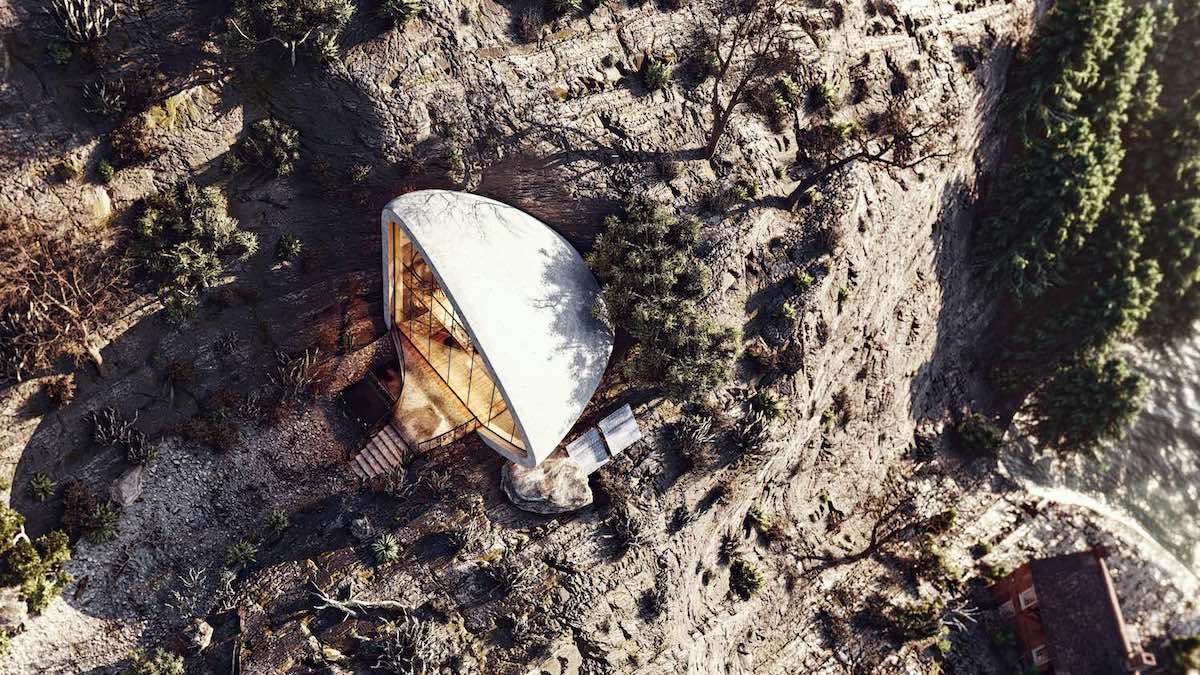Atelier LI: This holiday villa is located in the countryside of Pudong, Shanghai. The proprietor hoped to demolish the old house and to build a new one for the two families when returning from the urban life to the countryside, spending weekends and their holidays with the grandparents. The big family can get together, experience quiet country life, relax in natural surroundings, and stay far away from the disturbance of outside.
Our main design strategies include the following. “Green” is placed first. Although the site faces an orchard and has a ground in front of the building area, which could be used as a garden, we still hope that greenery could be woven through the house to eliminate the opposition and isolation between the interior and exterior spaces. This is also influenced by the concept of traditional oriental garden. Secondly, as a house for the large family, public space is an important issue for considering. Open and comfortable spaces can create more chances so that family members meet and mingle here enjoying harmony moments. Thirdly, we stuck to the principle of Modernity during the whole course of this project. No matter how the surroundings of this site are, we think that to build a modern white house in the countryside of Shanghai has an important significance.
According to the construction specification for country house of Shanghai, the volume of the old house before distraction determines the shape of the new building. The outline of the first floor is fixed, at the same time the height of the eastward volume is limited to 2 floors and the rest part is 3 floors. Slope roof is obliged. The height of the cornice is also limited to 1.8m. Under these conditions we still hope to carry out our strategies of “Green” to place several courtyards in different floors. Vertical and inner gardens are created to ensure a tranquil inner atmosphere. Meanwhile, the gesture of the main volume is extrovert.

The horizontal volume of 21 meters long is obviously overhung that faces the orchard. The 3.5m overhung volume in the west reaches the limit of the site, which made up the loss of the interior surface caused by courtyards. Natural lighting enters the interior space through the large curtains to produce bright and soft atmosphere. The design of structure and constructional detail follows the local skill. We guided local construction workers having no experience of modern house to build architectural volume with the most common method, the combination of steel concrete and bricks.
After the villa was finished, its modern appearance influences the cognition and acceptance of local villagers. The client’s elderly parents continue their traditional farming life, growing vegetables and raising poultry, while the proprietors bring their urban lifestyle to the countryside, enjoying coffee viewing the courtyard. Here, different ways of living coexist. For the metropolitan as Shanghai, country house relives the stress caused by urban environment. Compared with most commercial houses, local residents think that self-built villa is more organic and better suited to their living needs. Moreover, according to Chinese land policy, it’s more economic to build their own house than buying for them. We hope that this project can explore the typology of country house suiting contemporary China, in the aspects of aesthetics, practicality and construction technology.






















